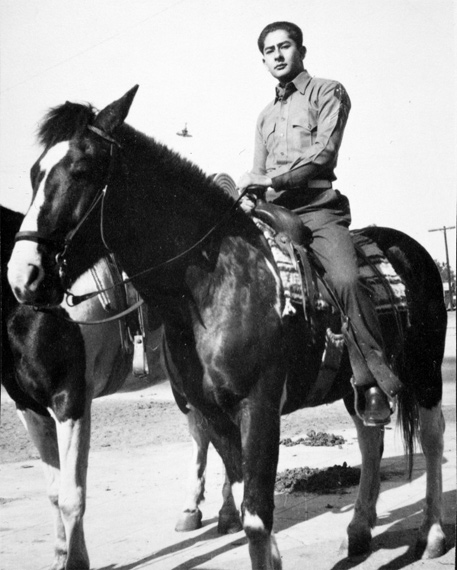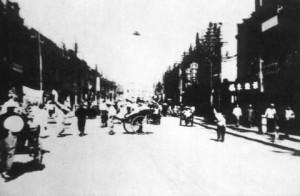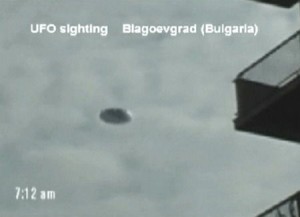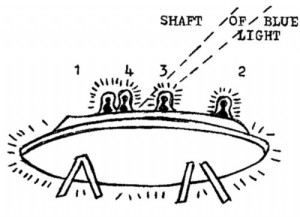Warning: strlen() expects parameter 1 to be string, array given in /home2/orbman69/public_html/wp-includes/functions.php on line 262
(Last Updated On: )
Date: May 2, 1945
Location: Fala Island, Truk Atoll
Time:
Summary: Two airborne objects & red circles of light and changing from a cherry-red to orange to a white light and then cherry-red again; followed for over an hour; no radar return.
Source: Page 163 Ref.1
Date: May 4, 1945: Fraser Jutland Denmark Sighting
Date: May 14, 1945
Location: Nagoya, Japan
Time:
Summary: Red or flame-colored light, constant position, same size as B-29 landing light
Source:
Date: May 25-26, 1945
Location: Tokyo, Japan
Time:
Summary: Fireball follows a B-29 of the 39th Bombardment Group for 50 miles. “A ‘fireball’ picked us up at the coast and followed us for 50 miles before falling off toward the sea.” Crew 44, 62nd Squadron – 39th Bomb Group
Source: VH
Date: May 25-26, 1945
Location: Mission 11
Time:
Summary: The mission was a night incendiary raid on downtown Tokyo and nearby waterfront. The visual bomb run was made at 9,100 feet in clear weather. Searchlights picked up four minutes short of the target and remained on us for a total of nine minutes. One fighter made a pass at us over the target and several others were seen. About 50 flares were seen (many carried explosives). A “fireball” picked us up at the coast and followed us for 50 miles before falling off toward the sea. We were hit several times by flak – hole in the nose, three in the left wing, several in the bomb bay and center wing tank areas, two in the top blister and an undetermined number in the tail compartment and tail surfaces. Tail Gunner Henry Matthaus was hit by flak and ammunition exploded and much of the equipment was destroyed or damaged. Matthaus failed respond on intercom. Charles Smith went back and broke open the tail compartment door. Lloyd Volkmar, Radio Operator (our first aid man), decided to move the severely injured Matthaus to the radar compartment, where he was able to render first aid. Iwo Jima was socked in and due to our damaged aircraft; we couldn’t take a chance on landing there. On our return, we had to open the bomb bay by manual means to eject six bombs, which had hung up due to a release malfunction. The rear doors wouldn’t close – we landed with them open. Despite the co-pilot’s controls being completely inoperative and the elevator trim tabs and other control functions knocked out, we made an excellent landing. We had also seen a B-29 go down in a flat spin with wing fire. Time of mission: 15 hours, 20 minutes
Source:
Date: May 25, 1945
Location: Atlantic Ocean
Time: morning
Summary: In early morning on a sunny day with intermittent clouds, a B-17 bomber was en route from Morocco to Dakar, Senegal. A silvery disc or ellipse was observed opposite the sun position, estimated to be 5 to 10 miles distant. The object paced the aircraft, hovering at times.
Source: Ref. 3; Harley D. Rutledge, Project Identification, 1981, p. 251
Date: latter part of the month of May 1945,
Location:
Time:
Summary: During the the greater part of the 509th Composite Group arrived on Tinian Island in the Mariana Islands, western Pacific Ocean. The movement was done via C-54 or B-29 aircraft following a route from the United States to Hickman Field, Hawaii, to Johnston Island, to Kwajalein Island in the Marshall Islands, and then on to Tinian Island.The first C-54, number 9009, of the Advanced Air Echelon flew from Kwajelein to Tinian on May 22, 1945. One can see that the last leg of the journey from Kwajelein to Tinian crosses north of the Caroline Islands. The Caroline Islands is where Truk Atoll is located. An extraordinary encounter with unidentified airborne objects occurred on May 2, 1945, between Truk Atoll and the Island of Guam, Mariana Islands.
APO #244
MISSION REPORT NO. 11-327
DATE: 2 MAY 1945 (GCT).
OBSERVATIONS: The crew of plane #616 over FALA ISLAND, TRUK ATOLL, at 021802Z observed 2 airborne objects at their 11,000 foot altitude changing from a cherry red to an orange, and to a white light which would die out and then become cherry red again. These objects were out on either wing and not within range of caliber .50 machine guns. Both followed the B-24 through all types of evasive action. A B-24 took a course for GUAM and one of the pursuers dropped off at 021900Z after accompanying the B-24 for an hour. The other continued to follow, never approaching closer than 1000 yards and speeding up when the B-24 went thru the clouds to emerge on the other side ahead of the B-24. In daylight it was seen to be bright silver in color. As the B-24 let down at GUAM, the pursuer took a course of 330 degrees at 15,000 feet to 20,000 feet altitude at 022130Z. One B-24 encountered eight intense flames light green in color, one of which burst and hung at 5,000 feet at 021013Z. There was no trail or warning until the actual burst. A B-24 reported 9 to 10 red tracer type trails of fire up to 5,000 feet. They came in pairs and one pair came within 50 to 100 yards of the tail of the B-24 at 021010Z. Source of each pair was at a different location.” Jo Chamberlin, in a 1945 article on the Foo Fighters published in the American Legion Magazine, provides what is the first secondary source Far to the south, a B-24 Liberator was at 11,000 feet over Truk lagoon, when two red lights rose rapidly from below, and followed the B-24. After an hour, one light turned back. The other kept on — sometimes behind, sometimes alongside, sometimes ahead about 1,000 yards, until daybreak when it climbed to 15,000 feet and stayed in the sun, like a Jap fighter seeking game, but never came down. During the flight, the light changed from red to orange, then white, and back to orange, and appeared to be the size of a basketball. No wing or fuselage was observed. The B-24 radioed island radar stations to see if there were any enemy planes in the sky. The answer was: “None.” A curious business, and one for which many solutions have been advanced, before the war was over, and since. None of them stand up. The important point is: No B-29 was harmed by the balls of fire, although what the future held, no one knew. The Japanese were desperately trying to bolster up their defense in every way possible against air attack, but without success. Our B-29s continued to rain destruction on Japanese military targets, and finally dropped the atomic bomb. Naturally, U. S. Army authorities in Japan will endeavor to find the secret — but it may be hidden as well as it appears to be in Europe.
Source: HEADQUARTERS VII Bomber Command
Date: May 1945
Location:
Time:
Summary:
Source:











Related Reports
Warning: strlen() expects parameter 1 to be string, array given in /home2/orbman69/public_html/wp-includes/functions.php on line 262
3 min read
1945: January UFO & Alien Sightings
Warning: strlen() expects parameter 1 to be string, array given in /home2/orbman69/public_html/wp-includes/functions.php on line 262
2 min read
1945: February UFO & Alien Sightings
Warning: strlen() expects parameter 1 to be string, array given in /home2/orbman69/public_html/wp-includes/functions.php on line 262
3 min read
1945: March UFO & Alien Sightings